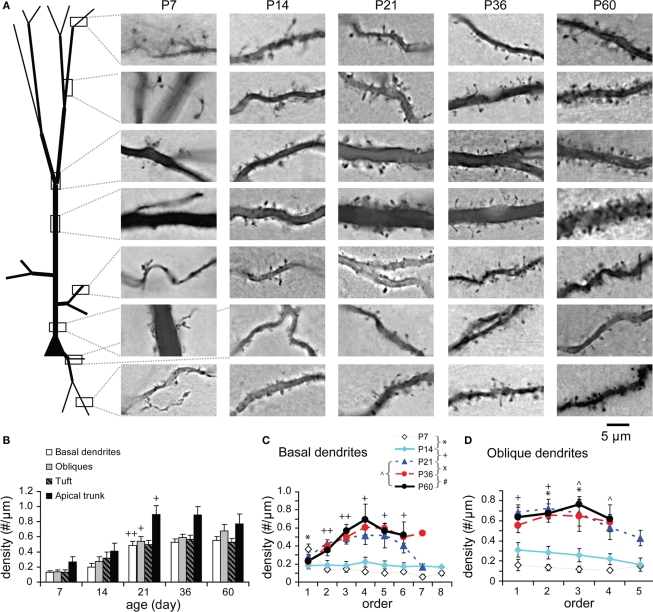Figure 11.
Developmental changes in spine density. (A) Pictures illustrating the spine density on different neural parts from each age examined. (B) Spine density on different neural compartments. No correction was made for spines obscured by dendritic shafts. Spine density significantly increased between P14 and P21 on all compartments (except the tuft on which a tendency of increasing was visible; on basal dendrites, oblique dendrites, apical tufts, apical trunks, respectively: P7: n = 8, 8, 8, 6 μm; P14: n = 9, 7, 7, 7; P21: n = 13, 15, 15, 14; P36: n = 12, 11, 13, 10; P60: n = 12, 11, 9, 2). (C) Spine density on basal dendritic segments versus branching order [same cells as in (B)]. At P7 and P14, spine density was relatively uniform on different orders except on the first order where the spine density was significantly reduced. From P14 to P21, the spine density significantly increased unevenly on different branch orders with a peak at the fourth order. Afterward, no significant changes were tested. (D) Spine density on oblique dendritic segments versus branching order at different ages [same cells as in (B)]. At P7 and P14, spine density was also relatively uniform on different orders with a significant increase on the second and third orders from P7 to P14. At older ages starting from P21, spine density further increased unevenly on different orders with a peak at the middle (second or third) orders. The significant increases were at the first and second orders from P14 to P21 and at the third and fourth orders from P21 to P60.

